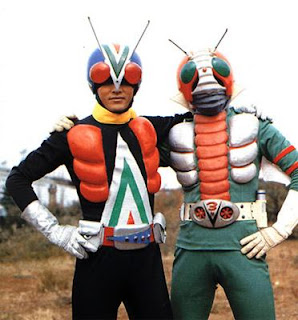(AP Photo/Kyodo News)
VIVAnews - a new era of commercial space flight began. Falcon 9 rocket from the company Space Exploration Technologies (SpaceX) has been launched from Florida, Friday, June 4th, 2010 ago.
SpaceX is not alone through the atmosphere for sending cargo and astronauts into space.
United States space agency, NASA has been known to ask for SpaceX and other companies, Virginia's Orbital Sciences to build unmanned rocket to send cargo to the international space station.
After that, SpaceX plans to modify the design of capsules Oriental Lockheed Martin as a space station lifeboat. Meanwhile, corporate giants Boeing also hopes to provide commercial crew of space flight.
Several smaller companies are also ambitious to build a space rocket to carry humans into the sky. Already there are six companies in the list.
1. Space Exploration Technologies (SpaceX)
Name of aircraft: Dragon and Falcon 9, can carry seven passengers or less - if coupled with the transport of cargo.
Founder of the company: Elon Musk, founder of the site money transfer, PayPal, wealth worth U.S. $ 100 million of wealth Musk and U.S. $ 20 million from outside investors.
Location: Hawthorne, California, began operations in 2002
Flights: Debut rocket launch in 2010. While the first flights will be conducted in 2011.
Two unmanned rocket that SpaceX, Falcon 9 and Dragon, originally intended to transport cargo to the international space station. Dragon will be ready to fly astronauts in watu three years after receiving a contract from NASA.
2. Orbital Sciences
Name of aircraft: 2 Cygnus and Taurus, Cygnus is designed as an unmanned aircraft.
Founder: David W. Thompson, Bruce W. Ferguson, Scott L. Webster, with a fortune: Approximately U.S. $ 1 billion
Location: Dulles, Virginia, began operations in 1982
Plan flight to outer space: 2011
Orbital Sciences has a contract worth U.S. $ 1.9 billion, with NASA to provide eight cargo delivery mission to the international space station using the Cygnus and Taurus 2. The launch is planned in 2011 from Wallops Island, Virginia.
Orbital has not announced plans to change the Cygnus became a manned aircraft.
3. Blue Origin
Name of aircraft: New Shepard, at least, can carry three astronauts
Founder: Jeff Bezoz, who is also the founder of Amazon.com
Location: Kent, Washington, began operations in 2004
Plan rocket launch, mid 2010
This company plans to close the meeting information about the launch of human spaceflight. However, Blue Origin has been testing prototype aircraft, the New Shepard in Texas.
Earlier this year, NASA chose the Blue Origin to develop an astronaut rescue system and build a prototype composite space capsule as part of a commercial crew launch the program.
4. Bigelow Aerospace
Name plane: Sundancer - can carry three crew and BA-330 - can carry six passengers.
Founder: Robert Bigelow, with a fortune of U.S. $ 180 million company from the wealth of Bigelow.
Location: North Las Vegas, Nevada, began operations in 1999
Rocket launch plan: 2015
Rocket Sundancer and BA-330 is expected to be a space station, not just a rocket. Company founder, Robert Bigelow dreaming develop the station on the Moon with inflatable technology. - Can be pumped.
Although Bigelow did not have a rocket or spacecraft to fly to the station, the company has worked with Boeing in the provision of crew members.
5. SpaceDev / Sierra Nevada Corp.
Name plane: Dream Chasers, can carry four passengers in suborbital flight, and 6 in orbital flight.
Founder of the company: Jim Benson (died), replaced by Fatih Ozmen
Location: Poway, California, began operations in 1997
Mengangkasa Plan: under development
California-based SpaceDev, wholly owned by Sierra Nevada Corp.. This company has developed the Dream Chaser - a plane that can carry crew and cargo into space, through the Atlas 5 rocket.
In February, the Sierra Nevada won projects worth U.S. $ 20 million from NASA to continue development Dream Chaser's.
6. Virgin Galactic
Name of aircraft: Spaceship Two, can carry six passengers and two pilots.
Owner: miyuner England, Sir Richard Branson, as well as providers of funds.
Location: London, England and Spaceport, New Mexico, began operations in 2004.
The flight plan: the end of 2011 or early 2012.
Virgin Galactic aircraft designed for a trip into space. Passengers who want to be a tourist is required to pay approximately U.S. $ 200 thousand per seat.
Meanwhile, aircraft carriers, WhiteKnightTwo - can be modified to launch small rockets or satellites for NASA or other users.
SpaceShipTwo is designed by aerospace engineer Burt Rutan. These are larger versions of SpaceShipOne, which flew successfully in suborbital flights in 2004.














 6/28/2010 01:42:00 PM
6/28/2010 01:42:00 PM
 Ee Blog
Ee Blog

 Posted in
Posted in 


















